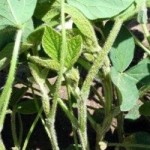This post explores a new paper by KBS LTER scientists Drs. Christie Bahlai and Doug Landis, Shifts in dynamic regime of an invasive lady beetle are linked to the invasion and insecticidal management of its prey. The paper is now available as a preprint at Ecological Applications. A version of this post, written by Dr. Bahai, originally appeared on her blog, Practical Data Management for Bug Counters. ~~ Neonicotinoids, a commonly used class of broad-spectrum insecticides, have been the subject of much controversy in recent years, particularly their impacts on bees, birds, and their
Kellogg Biological Station | Long-Term Ecological Research
